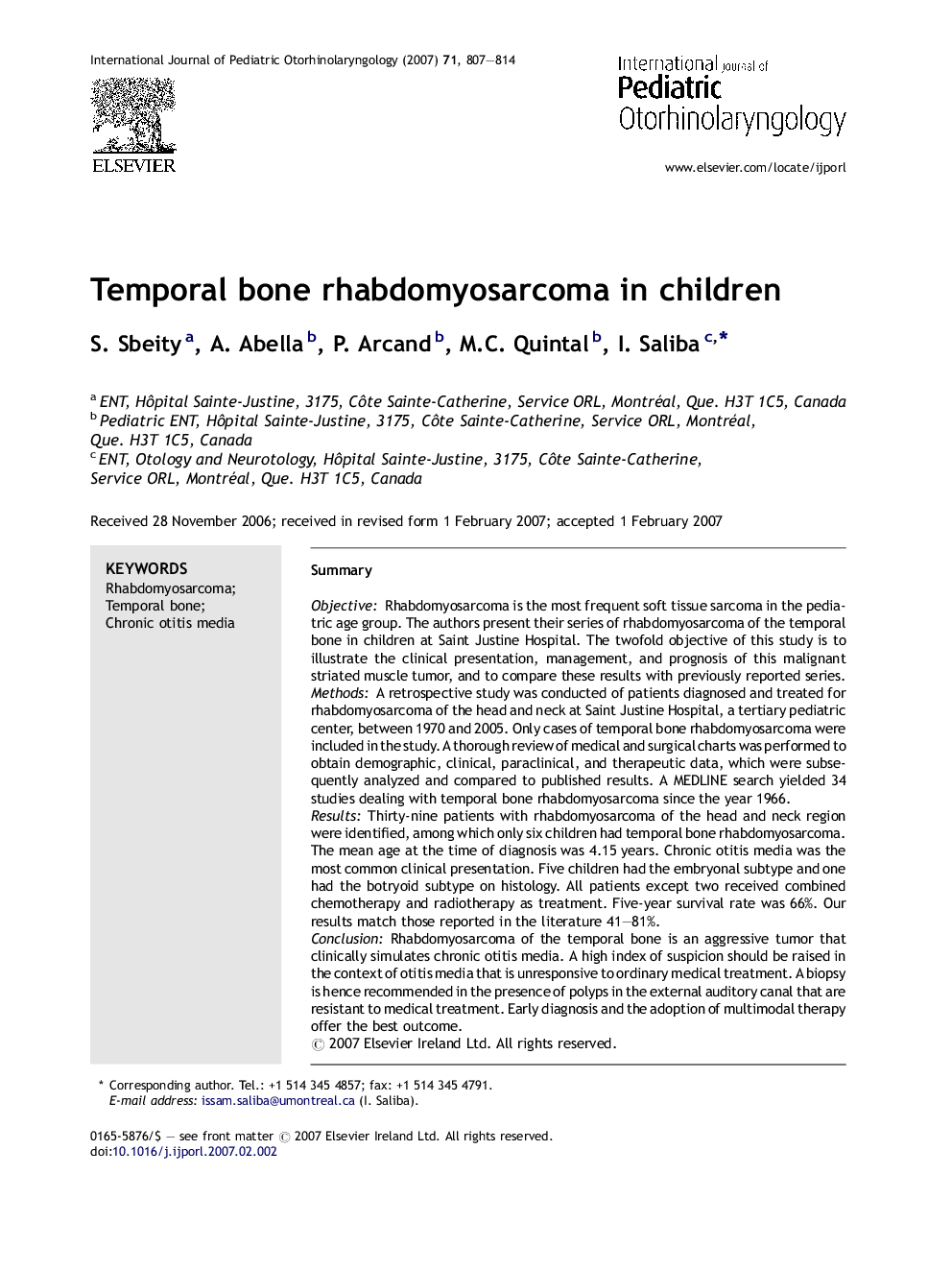| Article ID | Journal | Published Year | Pages | File Type |
|---|---|---|---|---|
| 4115260 | International Journal of Pediatric Otorhinolaryngology | 2007 | 8 Pages |
SummaryObjectiveRhabdomyosarcoma is the most frequent soft tissue sarcoma in the pediatric age group. The authors present their series of rhabdomyosarcoma of the temporal bone in children at Saint Justine Hospital. The twofold objective of this study is to illustrate the clinical presentation, management, and prognosis of this malignant striated muscle tumor, and to compare these results with previously reported series.MethodsA retrospective study was conducted of patients diagnosed and treated for rhabdomyosarcoma of the head and neck at Saint Justine Hospital, a tertiary pediatric center, between 1970 and 2005. Only cases of temporal bone rhabdomyosarcoma were included in the study. A thorough review of medical and surgical charts was performed to obtain demographic, clinical, paraclinical, and therapeutic data, which were subsequently analyzed and compared to published results. A MEDLINE search yielded 34 studies dealing with temporal bone rhabdomyosarcoma since the year 1966.ResultsThirty-nine patients with rhabdomyosarcoma of the head and neck region were identified, among which only six children had temporal bone rhabdomyosarcoma. The mean age at the time of diagnosis was 4.15 years. Chronic otitis media was the most common clinical presentation. Five children had the embryonal subtype and one had the botryoid subtype on histology. All patients except two received combined chemotherapy and radiotherapy as treatment. Five-year survival rate was 66%. Our results match those reported in the literature 41–81%.ConclusionRhabdomyosarcoma of the temporal bone is an aggressive tumor that clinically simulates chronic otitis media. A high index of suspicion should be raised in the context of otitis media that is unresponsive to ordinary medical treatment. A biopsy is hence recommended in the presence of polyps in the external auditory canal that are resistant to medical treatment. Early diagnosis and the adoption of multimodal therapy offer the best outcome.
